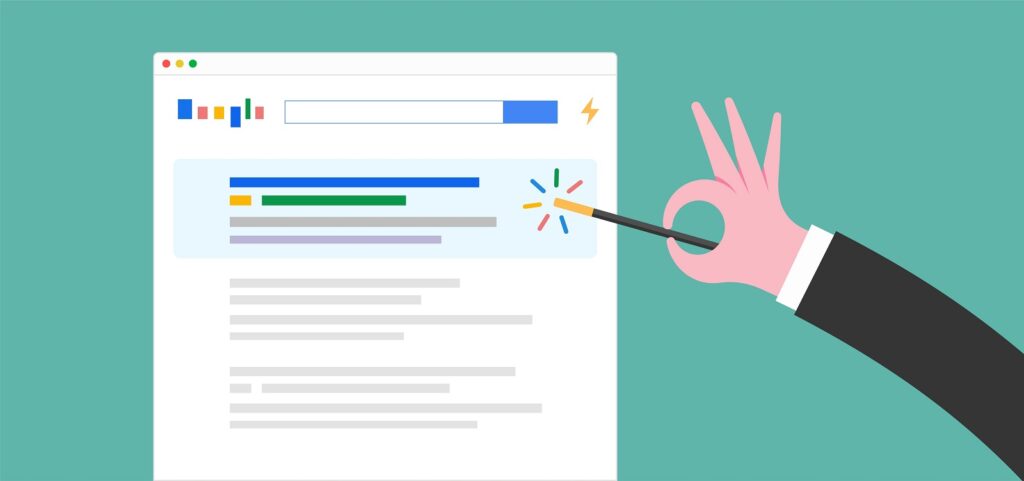Jumping into the various types of targeting in Google Ads can be a daunting task. If you’ve had trouble building out a good ad campaign, take a gander at our list of tips that highlight examples of the most common types of targeting—why your ad campaigns should be utilizing each.
Let’s start with Google Search:

Google Search, which used to be called the Google Search Network (GSN) way back when, is a gathering of related sites upon which your advertisements can show. When you create ads for Google Search, they can appear along with organic search results related to any of your targeted Search keywords or criteria.
Here are some of the most popular Google Search ad targeting options:
Search Keywords
Choose words or phrases relevant to your product or service; your ads appear when customers search for those terms on Google or search-partner sites.
By showing ads to users that searched with keywords relating to your brand, dealership, vehicle makes or models, you’ll know the placement of the text ad is aligned with the goal of the searcher.
Audience
With both Google Search and Google Display, you can target specific types of audiences based on several traits and characteristics, including:
- Affinity – Reach users based on a holistic picture of their lifestyles, what they’re passionate about and their hobbies/interests. (More on this later.)
- Detailed Demographics – Target users based on their long-term life facts and statuses. This includes homeowners, college students, new parents, etc.
- In-Market – Display ads to audiences who are actively researching products or services, which indicates their intent to purchase.
- Custom – Setting up custom audience segments is time-consuming but worth the effort if properly created. This allows Google to interpret your campaign goals and bidding strategy, then automatically choose a segment to maximize Reach, Consideration or Performance. (If you’d like more information about this very complex targeting tactic, contact us.)
- Your Data – The “Your Data Segments” option, which was previously known as “Remarketing (RLSA),” provides you the opportunity to reach users that have already interacted with your business in some shape or form. This includes targeting past website visitors, new users with similar interests to your website visitors, and even customers inserted within your CRM.
Language and Location
Choose the language—targeting a specific language can lower your cost-per-click—and geographic locations—such as a country, region or city—where your customers are located.
Customizing ad text and landing pages for the device and language can lead to higher conversion rates.
Devices
Show your ads to the right people across all devices based on their specific location, time of day, and device type.
Mobile shoppers are different than desktop shoppers. Targeting a specific device can help you make a more effective call to action, which can lead to higher conversion rates and more showroom traffic.
Google Display Network Targeting:

The Google Display Network, or GDN, gives you the opportunity to reach potential customers by placing display advertisements (image or animated) on thousands of news sites, blogs and an assortment of other websites. Below you’ll see a list of useful GDN targeting options.
Display/Video
Adding a list of Display and Video keywords will tell Google to only show your Display ads on sites related to those terms. This form of contextual ad targeting, while laborious, can reduce your cost per click (CPC) dramatically if done well.
By showing ads to users that are viewing or have viewed pages about your brand, you’ll know the placement of the ad is aligned with the content the user is viewing.
Language and Location
Choose the language and geographic locations—such as a country, region, or city—where your customers are located.
Location targeting helps you focus your advertising on the areas where you’ll find the right customers, resulting in a potential increase in campaign efficiency. We suggest you choose the region where your customers live and where your business can serve them.
Placement
Do you already know which websites your customers visit? Placement targeting lets you put your message on exactly those sites—and on videos, RSS feeds, and mobile sites, too.
If you sell used cars, you can choose a website about used cars (that’s the “placement targeting”) and then use Google contextual targeting to automatically find relevant pages on which to display your ads. The choice, and the power, is yours.
Device
Choose to show ads to your customers when they visit Display Network sites only on desktop and laptop computers, or only on iPhones and Android devices—or on all of these.
If your potential shoppers are on a mobile device, you can have custom landing pages that would lend themselves to a higher conversion rate based on the device in use.
Demographic
The ability to target customers based on specific demographic groups, including gender, age, and parental status.
If your customer base skews toward a particular age range or gender, you can use demographic targeting to show ads specifically to those people. For example, if your products are expensive, young people may be less likely to buy them, so you’d exclude the age range of 18-24 and focus your budget only on your best customers.
Your Data Segments
Previous customers (Customer Match) and people who have already visited your site are shown your ads as they browse other sites on the Google Display Network.
When it comes to convincing the people who visit your site to take action and convert, one visit is typically not enough. Remarketing gives you a chance to bring back indecisive customers with tailored ads and offers that relate to the experience they had on your site. With remarketing, you get another chance to close the deal.
In-Market
Reach potential customers while they’re actively researching and comparing products, regardless of what site they’re currently visiting.
In-market audiences can drive incremental conversions, helping you to connect with consumers as the last step before they make a purchase decision. This is a particularly important Google Ads target for auto dealership PPC campaigns. Ask us how we use in-market targeting to help our dealerships see more ROI on their paid ads.
Affinity
Affinity audiences consist of aggregated consumers who have demonstrated a qualified interest in a particular topic.
Affinity audiences allow you to reach and connect with an enthusiastic audience of consumers likely to love your brand, on a massive scale. You can purchase and reach audiences the same way as you would on TV, helping to keep the process of online buying simple and familiar.
Life Events
Engage with viewers on YouTube, Gmail and the entire Google Display ecosystem based on significant life events, such as a recent graduation, a new job or move, or starting a family.
Building a campaign for life events will enable you to be more granular with your targeting, as these milestones are infrequent and result in a smaller audience pool, this a smaller reach. However, intent to buy is much greater with this audience, making it a more lucrative targeting option.
The top-tier marketing team at Maritz Automotive is always up to date on Google Ads targeting options. It is our goal to make sure every client utilizes the most effective and efficient ad campaign to accelerate their business’s growth. To learn more about our solutions for automotive SEM, or if you’d like to speak with an expert at Maritz Digital Experience, please connect with us today.
